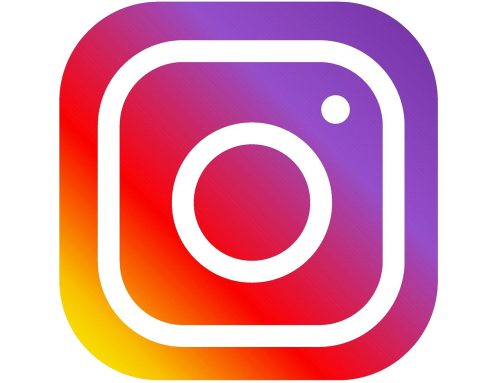When you think of world-class advertising, what comes to mind? A clever or funny 30-second spot during the Super Bowl? How about a full-page spread in Vogue’s September issue? Or is it a sexy commercial starring the most sought-after celebrity in Hollywood?
Times have changed, and so has the definition of effective advertising. When is the last time you even sat down and read a magazine cover to cover? And doesn’t everyone DVR their favorite shows now so that they can blow through the commercials, since they feel like an intrusion? And when you see a celebrity hawking a product, especially when it doesn’t seem like a natural fit, don’t you find yourself thinking more about why they need the extra cash than whether its something you want to buy?
The old model of advertising is broken. Why? Because it’s too crowded out there. As Tony explains at Business Mastery:
Ten years ago, on average, it took a person four exposures to an ad before they took action – meaning if they had an interest within four exposures, the average person would follow through, get the information, make the purchase, whatever. Today that number has multiplied by four. It now takes 16 exposures before the average person takes some form of action.
Now, when you think of the expensive marketing and the competitiveness of it, where is marketing today? It’s everywhere, it’s on people – it’s on their pants. It’s on bananas, is it true? It’s everywhere, and as a result, you ignore it. When you’re online and see those banner ads, do you even see it? No.
This is why influencer marketing has emerged so quickly. It falls into Tony’s idea of creating “raving fan customers” that will evangelize your brand and share the message with their followers. These individuals with enormous audiences can make you stand out from that crowded advertising space and bring massive value to your brand.
While it’s still in its nascent stages, influencer marketing quickly proving to be one of the most effective (cost- and conversion-wise) social strategies for businesses of all shapes and sizes. In fact, recent research found that 63% of marketing professionals with influencer strategies already in place are expanding their budgets this year. And 32% deemed influencer campaigns “essential” to their marketing strategies, while 41% said they have garnered more success in influencer campaigns than more traditional advertising tactics.
So just why is influencer marketing rising to the top? And how do you go about aligning yourself with an effective influencer? Here’s what you need to know to effectively leverage it for your brand.
IT’S MORE AUTHENTIC
Authenticity is a rare commodity. Think about it: When you see a commercial touting the “easiest weight-loss solution in the world,” is there a single bone in your body that believes them? Or what about an ad for a shampoo that makes your hair thick and shiny; how likely are you to buy into it? All the hyperbole and Photoshopping has made us increasingly wary, and with good reason. But this is precisely why influencer marketing has become so effective.
Influencer campaigns are inherently more organic than the more traditional advertisements, primarily because influencers are seen as thought leaders and even as role models. By investing time and energy into cultivating their audience and connecting with their following, these influencers have become trusted sources. In short, people listen. So when an influencer highlights a product or service, it comes across as a genuine recommendation. This level of sincerity is key for digital and mobile-minded marketers, especially when it comes to appealing to younger generations who don’t like to feel like they are being marketed to. Customers crave authenticity, and that’s what they get with influencer marketing.
IT’S COST EFFECTIVE
There’s not one single standard pricing model when it comes to influencer marketing. Some influencers will collaborate with your brand simply because it helps them build their brand. A vanity url and some free product or experiences can be offered in lieu of a monetary payment. Other influencers will agree to performance-based pricing model, where the amount you pay is based on the number of clicks and amount of engagement (likes, shares, retweets). And still others will opt for a “flat rate” pricing, where you pay per post or per video.
While some may be confused by this wide variety of pricing, it’s nothing a little research can’t fix. And besides, this range allows you to find what you are most comfortable with, and what you think will be the best model for your brand.
But whichever you choose, it’s bound to be more affordable than traditional advertising. In fact, a recent survey of 100 U.S. marketing pros by Bloglovin’ found that on average, 36% spend less than $5k per campaign and 24% spend less than $10k. That means that more than 6 in 10 marketers are spending less than $10k per campaign; many media buys have a minimum of $25k+! Only 6% of influencer campaigns are in the $75k to $100k range, and those are likely for large national brands.
IT HELPS YOUR BRAND IMAGE
It’s 2017, so probably don’t need to explain the importance of social media marketing. As you know, social media can help drive massive traffic to your site, can create a stronger connection between you and your customers, can boost your site’s SEO, and can generate earned media coverage.
But even more than this, there is a certain kinetic energy that builds around your brand when you are buzzing through the veins of social media. Whatever platform it is – Facebook, Instagram, Twitter or Snapchat – when you are relevant in social media, you become relevant to the customer.
Influencers can help bolster this electricity around your brand. They can give you access to a more targeted demographic, grow your social media following, drive SEO value, and add a new breadth of content that ultimately gives more dimension to your brand.
Influencers are thought leaders, so when they tout your product or service, people listen and engage, which can also bring a sense of community to your brand – which can be difficult to do if you don’t have a strong regional, offline presence (e.g., brick-and-mortar stores, industry events). That feeling of community then allows everyone can collectively experience the vision you are trying to put forth, and in some cases, adopt it as their own so it becomes a shared vision.
WHAT TO BE WARY OF
Influencer marketing may be all the hype right now, but it’s still a little like the wild West. Here’s a cautionary tale to explain that. Remember the popular YouTube creator PewDiePie? He was one of the biggest influencers in the video world (he has over 54 million subscribers), and he also found himself at the center of a major controversy when Disney’s Maker Studios and Google’s Preferred advertising program cut ties after he posted videos people felt were anti-Semitic.
This is a good example of how ultimately, you don’t have any real control over influencers. They can still post whatever content they deem appropriate, even if that definition of what is appropriate baffles you. They aren’t bound to any behavioral guidelines other than the ones set up by the social media platform, and unless you put certain stipulations in your contract with them, it’s difficult to exert influence over their content.
Be sure also to take the necessary steps to ensure the influencer campaign complies with FTC guidelines for full disclosure. Transparency is key. As influencer marketing strategies becomes more prevalent, the Federal Trade Commission is cracking down on paid promotions and endorsements that fail to be clear with the audience that these are sponsored ads.
HOW TO EVALUATE AN INFLUENCER
When it comes to determining whether an influencer is a good brand fit for your company, there are the obvious metrics you can apply.
First, scope out their audience. The goal is to reach a more targeted demographic. But if you are an organic baby clothing company working with an influencer whose audience consists of teens and millennials, you’re missing the mark. That is why it’s key to develop your user personas, then go out and hunt down an influencer that speaks to that audience, so you can tap into a wealth of customers that will actually be interested in what you have to offer.
Next, check out the number of followers. If they only have a few thousand, that doesn’t exactly make them a thought leader. But similarly, even if they have hundreds of thousands, if the followers aren’t actively engaged (liking, commenting, sharing, retweeting) then it’s still a moot point. Remember, it’s quality, not quantity.
Then it’s on to the quality of content. Conduct an exhaustive evaluation of the posts or videos they put up. What messages do they seem to convey? What’s their voice? Are they consistently putting out high-quality content? And would they make a good spokesperson for your brand? For example, if you are a vegetarian restaurant, you probably don’t want someone who is wearing fur in the videos. Catch my drift? Make sure your values are aligned and that you would feel proud to have this person represent your brand.
UTILIZING RESOURCES
There are also a bevy of tools and providers whose sole mission is to help brands navigate the influencer marketing sphere. Klout, for instance, is a website that grades people’s social reach on a scale from 1 to 100. GroupHigh is another platform that gives brands the software to identify influential blogs, automate research and measure engagement.
Of course, if you have the capacity, there are also a number of influencer marketing agencies that offer a comprehensive zero-to-one experience. That is, the agency will assess your brand, then will identify and utilize the best influencers for your campaign. They can also guide the influencers to create content about your product or service, and, ideally, go beyond impressions and clicks and help you make the connection between the campaign and your long-term business objectives.
Kerry SongKerry Song is a writer and producer with a background in economics and finance. Her passion is to create meaningful content that engages and empowers the audience to become more mindful and more compassionate with themselves and with others.






